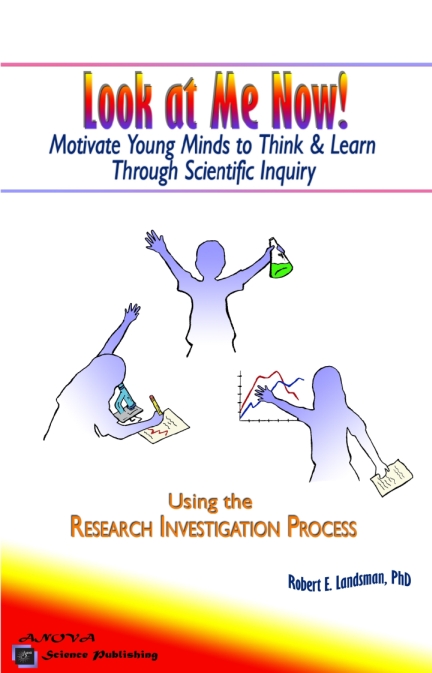
ANOVA Science Education
Look at Me Now! is what your students will be shouting to the world after learning science in your classroom using this scientific inquiry approach. Robert E. Landsman writes directly to the teacher to clearly and simply describe the Research Investigation Process (RIP ®) that comfortably encompasses State and National Science Education Standards. The RIP, recently recognized as an Exemplar Program by the National Science Teachers Association, is a unique approach to instruction designed to work by motivating students in grades K-12 through their own interests. What our critics have to say: A “Wow!” moment occurred, confidence grew, connections were made, and my special needs student with severe memory problems came to class with a new found interest in learning language arts. RIP scientific inquiry is a learning tool that works well for more than science. –Susan Kamida, Special Education Teacher, Kahala Elementary School, Honolulu, HI Robert Landsman’s “Research Investigation Process” is a proven way to engage your students in learning science through the art of inquiry. This book explains the nuts and bolts of this process in a sometimes light, simplified tone that can make the most difficult concepts easy to digest and implement into the classroom. –Don DeWitt, PhD, Teacher of Biochemistry and Physiology, Bergen County Academies, Hackensack, NJ |
|
Click Below to See the Table of Contents in pdf Form Click Below to See the Table of Contents in HTML Form
The RIP clearly defines the basic critical thinking processes that can be applied to any field of study and brings to focus what the future of education has to offer. The clarity and simplicity of the presentation used in this book will benefit the teacher and student alike and, in the long run, society. –R. Gordon Schaubhut, Senior Staff Scientist, ITT Industries As a product of the Research Investigation Process, I mastered not only content knowledge but also more importantly learned to utilize a scientific way of thinking. This unique approach to problem solving, which involves observation, hypothesis testing, and critical decision making, has served me well through my medical studies. I am often amazed that something that I learned ten years ago is still with me and influences my work with patients on a daily basis. –Devika Gajria, MD, MPH, University of Chicago Hospital Resident and former RIP student |
|
||||

